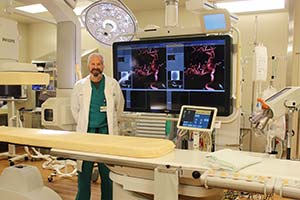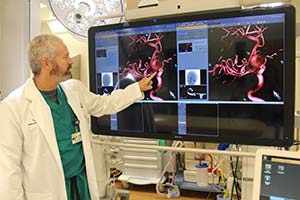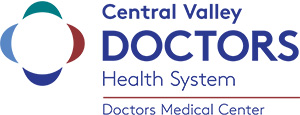Neurointerventional Radiology Program at Doctors Medical Center Hits One-Year Anniversary, Celebrates 100th Procedure
Aug 30, 2018Modesto, Calif. – Doctors Medical Center is proud to provide access to some of the most advanced interventional radiology techniques to treat blood clots, aneurysms and strokes without patients having to travel to Sacramento or San Francisco.
 The neurointerventional radiology program at Doctors Medical Center hit its one-year anniversary on Aug. 1, 2018, and has now performed more than 100 procedures. The program completed 35 within six months after launching. Most programs similar to this one, typically perform 25-35 in the first year. In addition, many programs achieve approximately 100 cases every five years.
The neurointerventional radiology program at Doctors Medical Center hit its one-year anniversary on Aug. 1, 2018, and has now performed more than 100 procedures. The program completed 35 within six months after launching. Most programs similar to this one, typically perform 25-35 in the first year. In addition, many programs achieve approximately 100 cases every five years.
“To perform 100 procedures in the first year is quite an accomplishment,” said Warren Kirk, CEO of Doctors Medical Center. “With the services we provide, stroke patients can stay close to home for advanced treatment and therapies, without having to travel to surrounding areas for care.”
Many are familiar with strokes and the devastating effects they can have on victims. Strokes are the No. 5 cause of death and a leading cause of disability in the United States. The best hope for a positive outcome from stroke is immediate care. As they say, time is brain.
When stroke patients arrive at Doctors Medical Center, they are treated by the emergency department team and physicians, and then if needed, sent on to be treated in the neurointerventional biplane suite by Dr. James Jaffe or Dr. Bradley Glenn. Both physicians are fellowship-trained neurointerventional radiologists who can treat many complex brain conditions, even life-threatening ones, without surgery.
 To remove blood clots, physicians utilize the advanced biplane equipment that allows a three-dimensional view of the tiniest vessels in the brain. They go in through a tiny incision made in the groin and thread a catheter (thin tube) up through the main artery and into the brain. The catheter is then inserted directly into the blood clot and removed.
To remove blood clots, physicians utilize the advanced biplane equipment that allows a three-dimensional view of the tiniest vessels in the brain. They go in through a tiny incision made in the groin and thread a catheter (thin tube) up through the main artery and into the brain. The catheter is then inserted directly into the blood clot and removed.
“We are so proud to offer this groundbreaking therapy to patients in and around the Central Valley,” Dr. Jaffe said. “Without this program offered locally, many stroke patients would have devastating outcomes. This therapy is truly life-saving.”
One of the benefits of this procedure is there are usually no large incisions, which can result in less pain, shorter recovery time and fewer risks than in traditional surgery. In some cases even better results can be achieved. This is a safe and effective alternative to brain surgery and can be used to treat aneurysms, blocked arteries leading to the brain, dangerous tangles of blood vessels (arteriovenous malformation) and other serious brain disorders.

